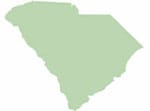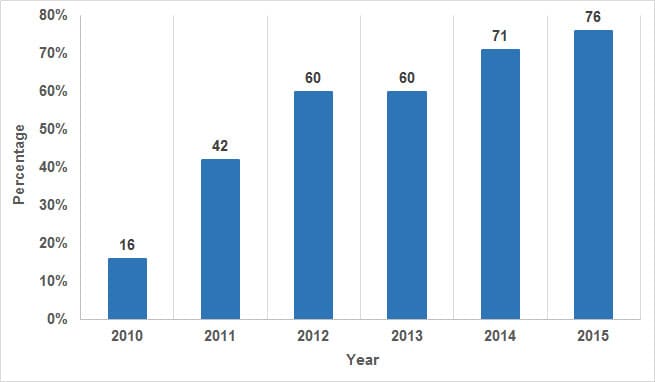FoodCORE Center: South Carolina

Program Overview
The South Carolina Department of Health and Environmental Control (DHEC) established its FoodCORE program to improve the ability to detect and respond to foodborne outbreaks by enhancing epidemiologic, laboratory, and environmental health capacity.

“FoodCORE has greatly enhanced our case interviewing capacity. Before FoodCORE, we didn’t have resources to routinely interview people with Salmonella infections. During 2014-2015, FoodCORE-funded staff successfully interviewed over 2300 reported cases. This program is critical to our responding to suspected outbreaks.”
David Young, Foodborne Epidemiologist
Year joined FoodCORE: 2011
Population: 4.9 M1
Structure: Centralized
Number of local and tribal health departments: 46
Epidemiology:
- Increased capacity for interviewing to improve interview timeliness and completeness
- Provided staff to assist with outbreak investigations
- Enhanced cluster detection and analysis capacity for enteric disease
Laboratory:
- Increased capacity for serotyping and DNA fingerprinting (PFGE)
- Maintained a courier service to deliver specimens to state laboratory
- Sequenced positive norovirus outbreak samples and participated in CaliciNet
Environmental Health
- Expanded surveillance of food complaints
- Conducted trainings for regional health departments on outbreak investigation methods
- Implemented environmental testing and product traceback as investigative tools
12015 Population Estimate https://www.census.gov/quickfacts/
South Carolina-FoodCORE enhances detection, investigation, and control of foodborne disease with increased staffing at the regional and central office levels to support laboratory and investigative expertise. Before funding, resources were not available for activities including 1) routine interview of people with a foodborne illness, 2) expanded food complaint surveillance, and 3) DNA fingerprint testing (PFGE) of all Salmonella isolates. These processes support the identification and rapid investigation of suspected outbreaks by epidemiologists.
Expanded food complaint surveillance plays a pivotal role in outbreak detection. It has expanded dramatically since FoodCORE funded a staff person dedicated to enhanced environmental health outbreak response. The proportion of food complainants interviewed (with interviews including a 72-hour food history) has risen from approximately 16% before funding to 76% in 2015.
